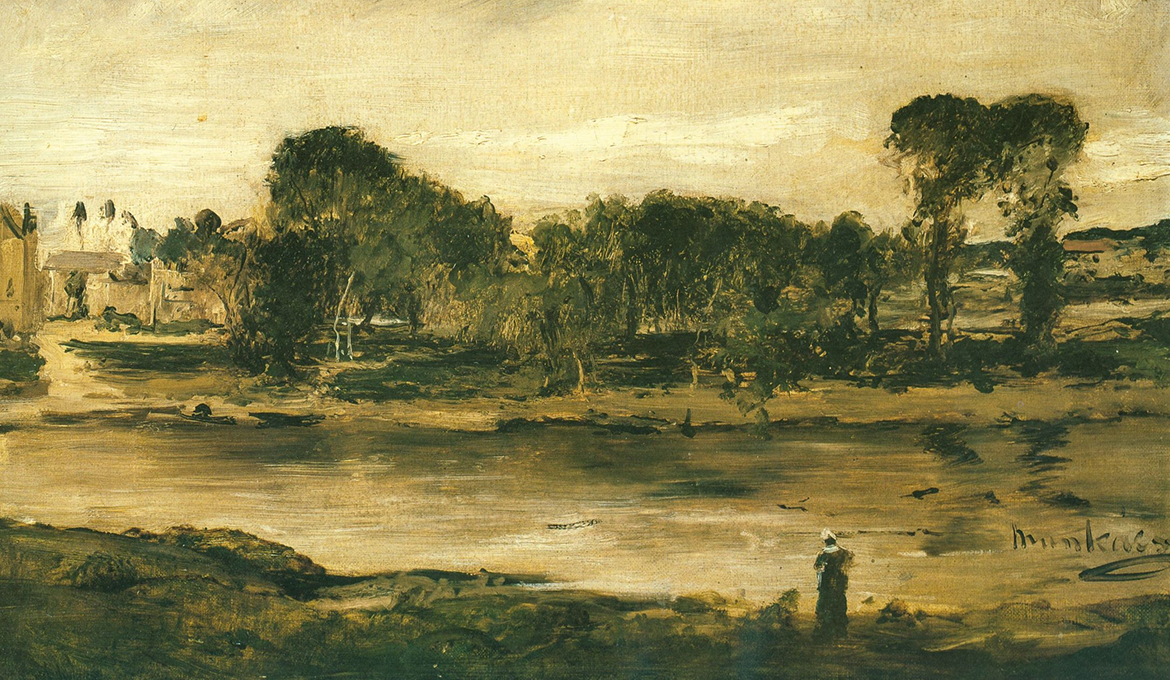
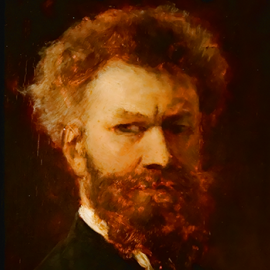
MUNKACSY MIHALY
1844 – 1900An outstanding representative of the European fine arts of the late XIX century.
- Biography
- Portfolio of works
- Video archive
- Bibliography
Biography
one of the most famous figures of the national art school of Hungary, the pioneer and creator of the Hungarian realistic painting. Life and creative path of the artist was connected with Transcarpathia, Hungary, Germany, France, and his contribution to the development of world painting is significant and undeniable.
He was born in the Transcarpathian city Mukachevo on February 20, 1844 in the German family Lieb - immigrants from Bavaria. Since 1863, he began to use the pseudonym formed from the Hungarian name of his native city, and in 1868 he officially changed his surname to Munkácsy. Childhood and young years of the future artist were a period of poverty, deprivation, humiliation and exhausting work for the sake of survival. At the age of six he became an orphan and was adopted by his uncle. From the age of 14 he worked as an apprentice in a carpentry workshop. From his childhood he showed a penchant for drawing. His diligence and talent was noticed by the wandering artist Elek Samosh. During 1862-1863 he gave the young artist the first lessons in painting and subsequently invited him to copy paintings in the National Museum in Budapest. In Budapest young Mihaly enlisted the support of the famous Hungarian artist Antal Ligeti and went to study at the Vienna Academy of Arts (1865), then-Munich Art Academy (1866-1868).
The second, triumphal part of his life began. Such early works of Munkácsy as "Storm in the Steppe" (1867), "Flood" (1868), "Yawning Apprentice" (1869) attracted the attention of the artistic world. In 1869, Munkácsy wrote a picture "Condemned Cell", which won the Gold Medal at the art salon in Paris in 1870 and brought her author European fame. A great master appeared in Hungary, from whom the era of Hungarian realism and national romanticism began. The outstanding canvasses of this period became "Night Vagrants" (1873), " Woman Gathering Brushwood " (1873), "Roma Camp" (1873), "Christ before Pilate" (1881), “Golgotha” (1884), “Ecce Homo” 1896), and also numerous genre and multi-figured compositions. His portraits, that deeply penetrated into human psychology, belong to the world treasury of this genre - they originate from the Düsseldorf school. The master's approach to landscapes, scenes of rural life developed after his stay in French Barbizon (1873), where the French realists Corot, Courbet, Millet had worked. Numerous works of the salon plan - everyday scenes and still lifes the artist performed on request. In general, various in topics, content, drama the heritage of an extremely fruitful and diverse artist consists of about 600 works.
In 1880, Munkácsy was elected an honorary member of the Royal Academy of Fine Arts in Munich. The Hungarian government awarded him with the Order of the Iron Crown of the third degree, and the Mukachevo Mayor's Office at his meeting elected him an honorary citizen of the city. The artist himself was able to visit Mukachevo in 1882. He was met with great honours, a diploma of honorary citizen and a silver laurel wreath with inscriptions in Hungarian and French "Mukachevo-Munkácsy" were handed to him in the town hall, and it was also opened a memorial plaque on the house where he was born.
In the 1890s Mihály Munkácsy was seriously ill, but continued to paint. In this period, he painted "The Dying Mozart" (1888), "Discovering the Motherland" (1893) "Strike" (1895). The artist died on May 1, 1900 in Germany, and he was buried in Budapest. But, the artist was forgotten neither in the world, nor in his historical homeland. On the occasion of the 150th anniversary of the artist, UNESCO declared 1994 the year of Mihály Munkácsy. Then after his name it was called Mukachevo Children's Art School, and a bust of the master was installed in the centre of the city . An exhibition of classic works by Mihály Munkácsy was held in 2007 in Mukachevo Castle, at the opening of which it was present the President of Ukraine and the Prime Minister of Hungary who made their speeches.
Portfolio of works
© MUNKACSY MIHALY
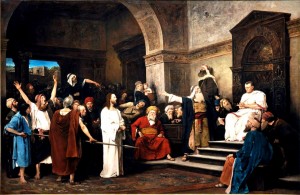
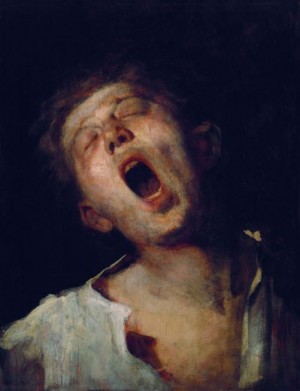
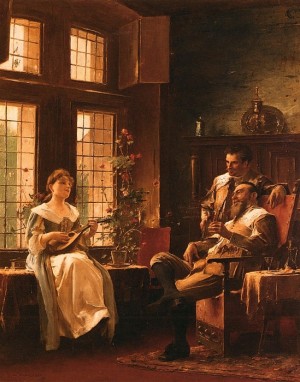
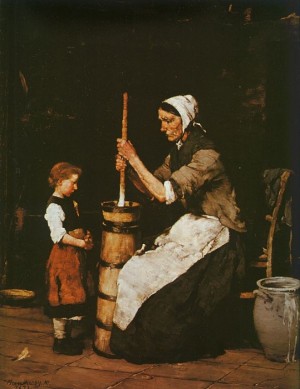
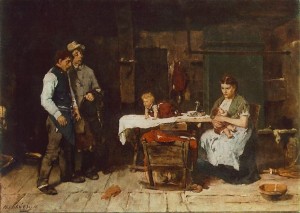
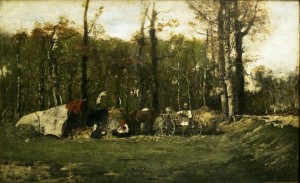
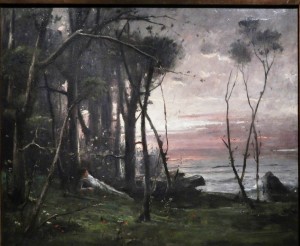
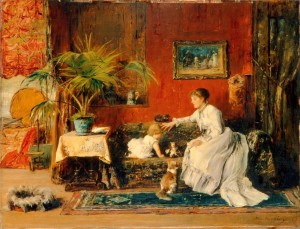
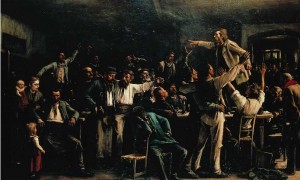
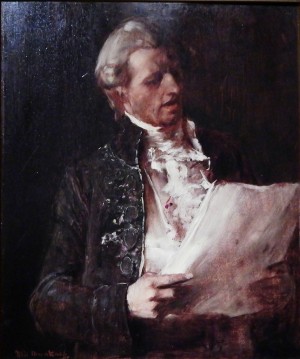
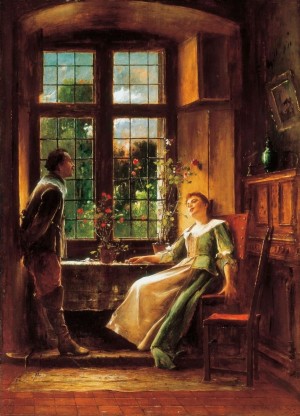
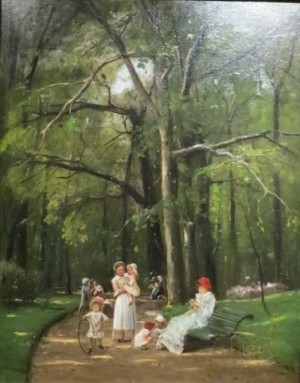
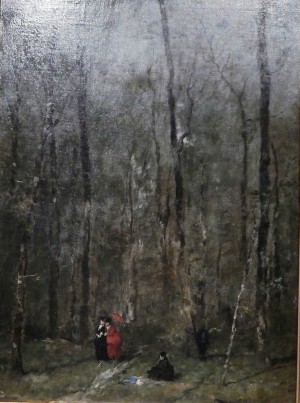
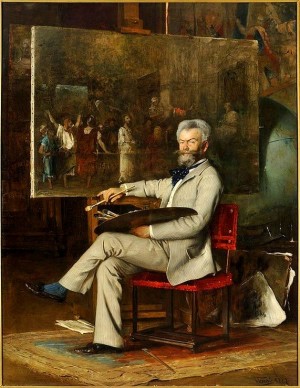
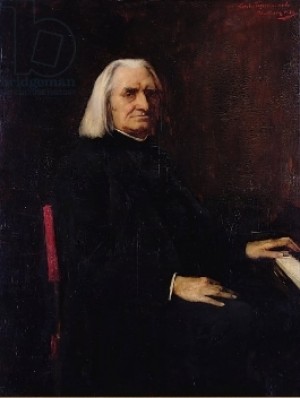
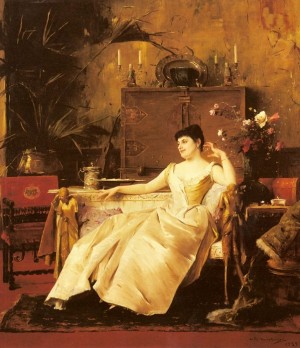
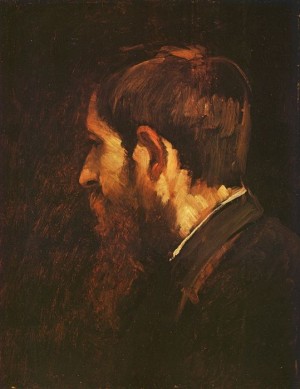
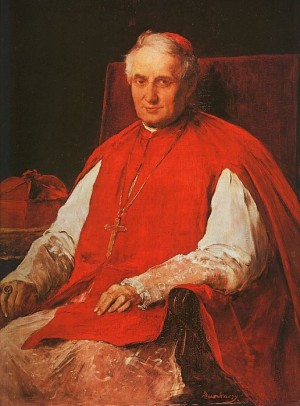
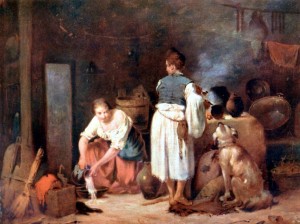
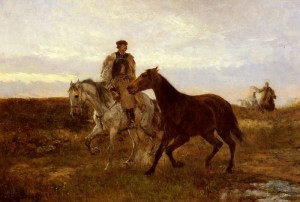
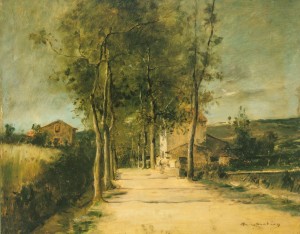
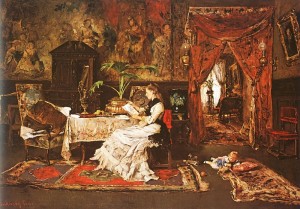
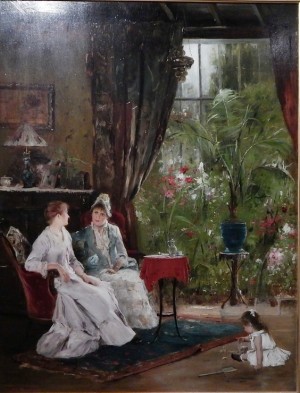
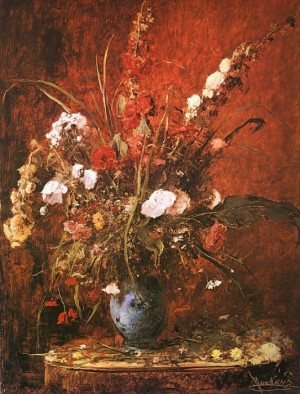
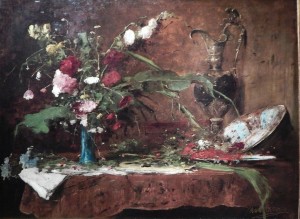
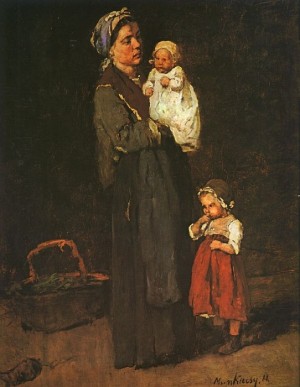
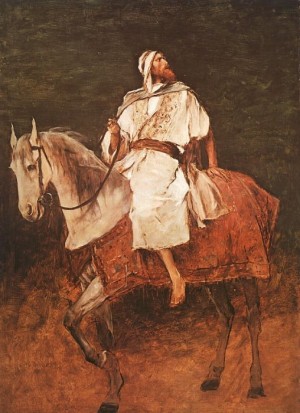
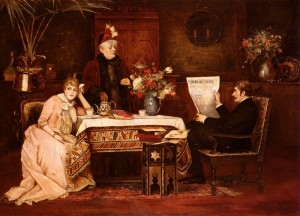
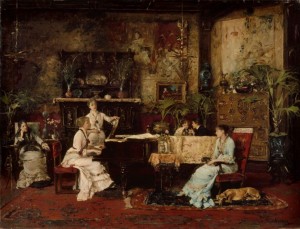
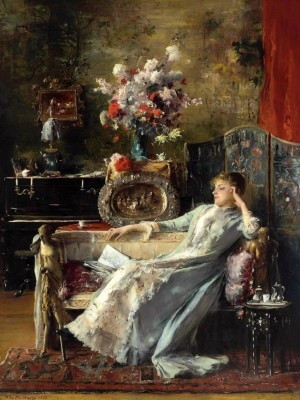
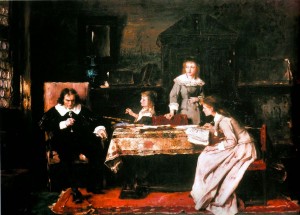
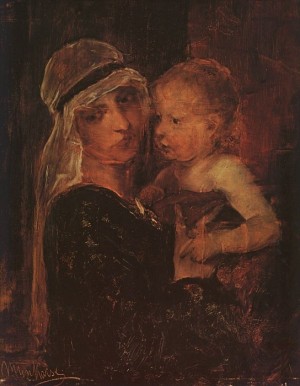
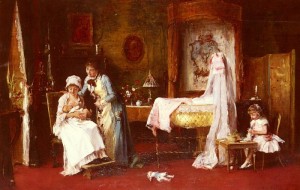
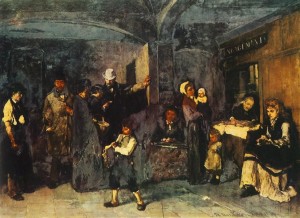
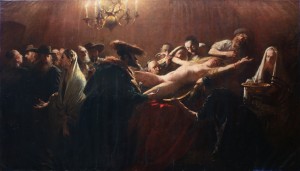
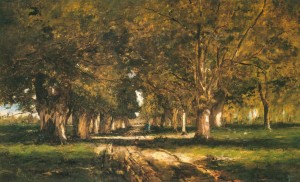
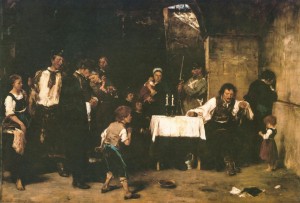
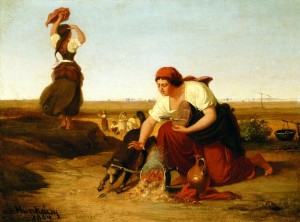
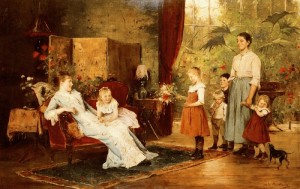
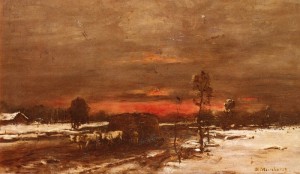
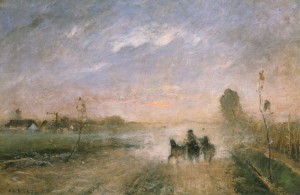

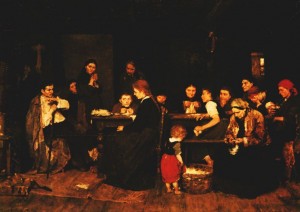
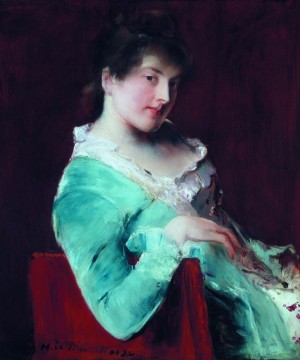
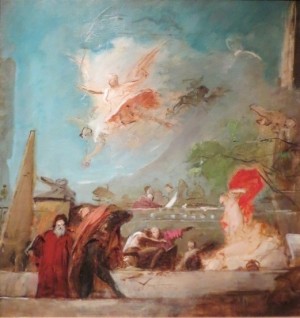
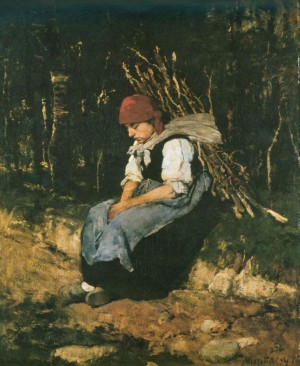
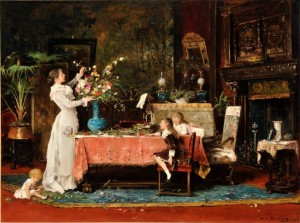
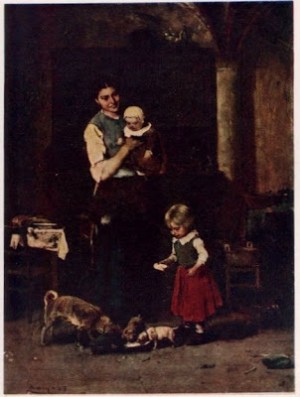
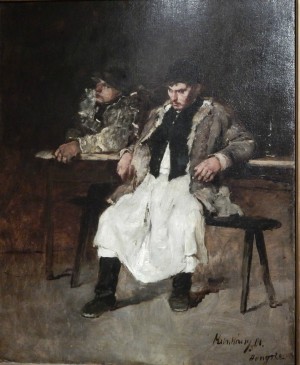
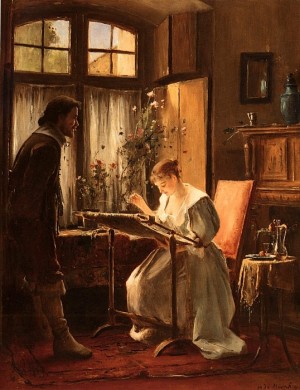
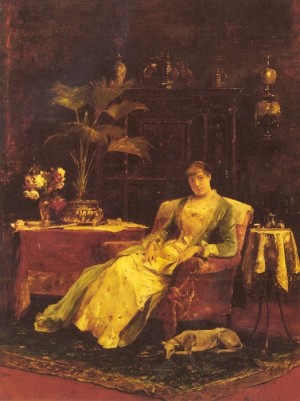
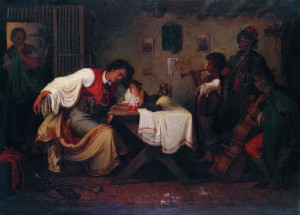
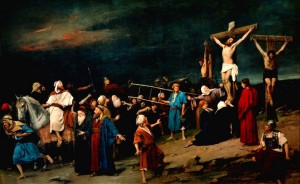
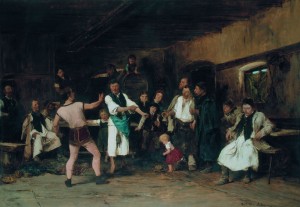
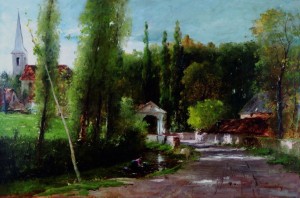
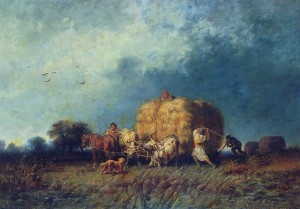
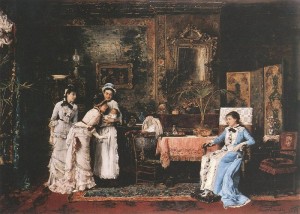
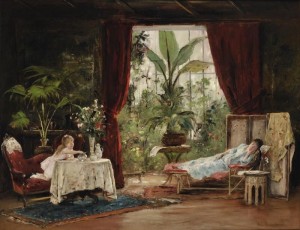
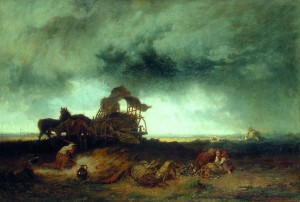
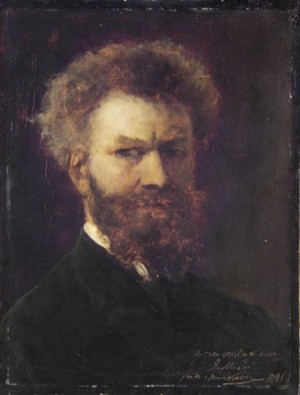
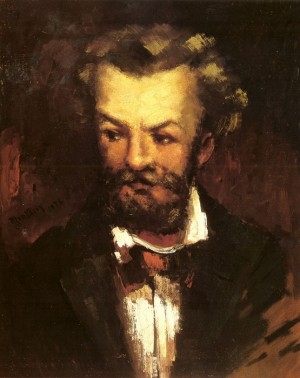
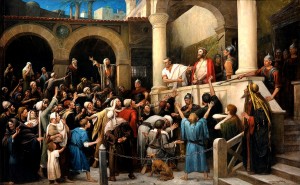
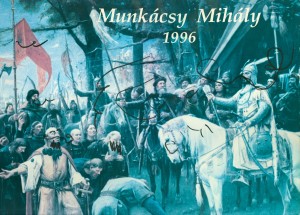
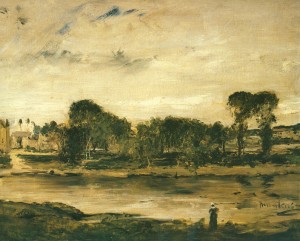
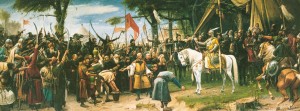
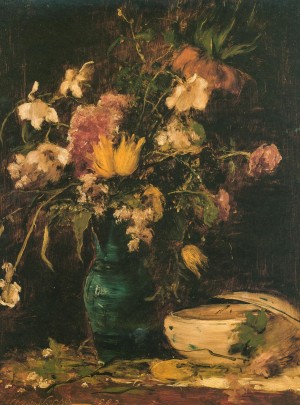
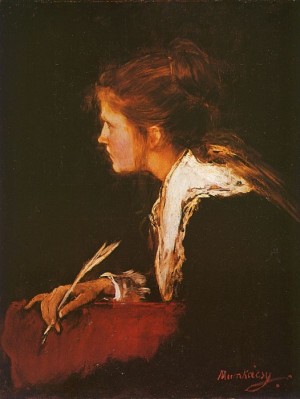
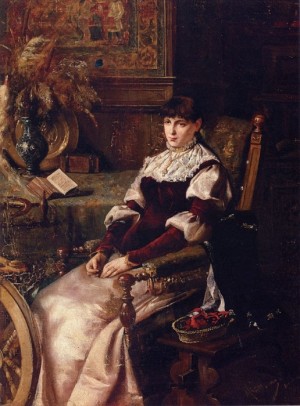
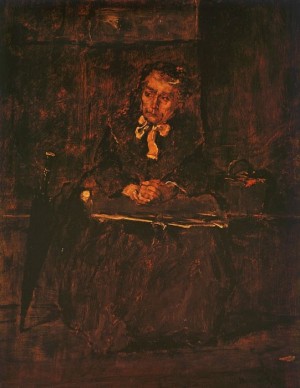
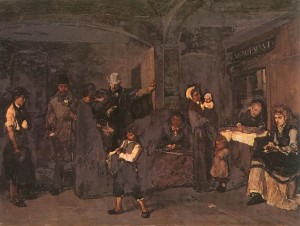
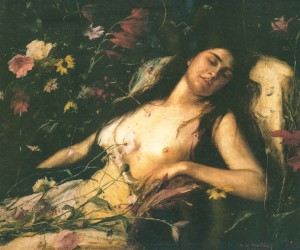
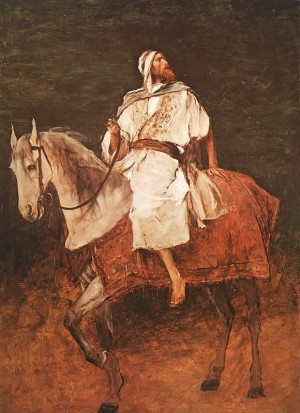
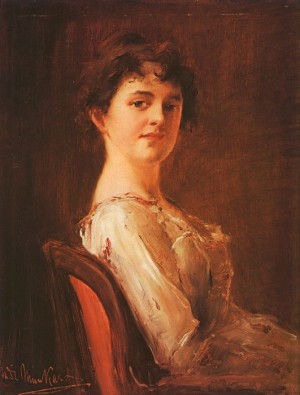
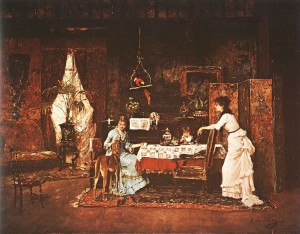
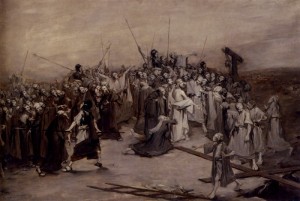
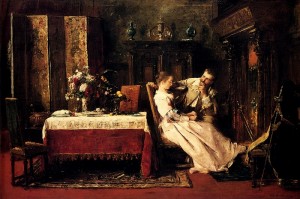
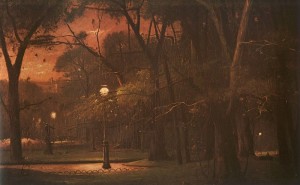
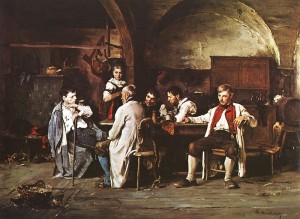
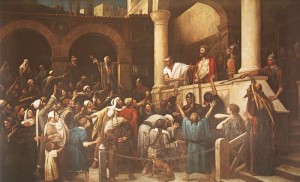
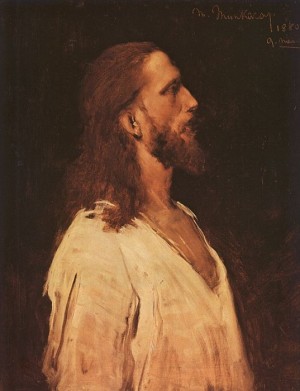
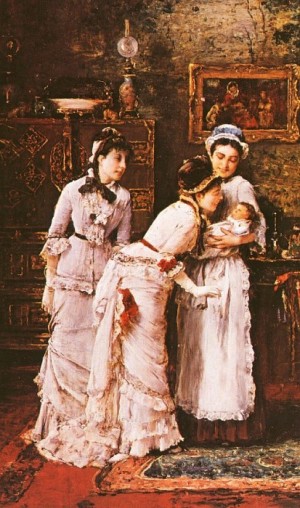
© MUNKACSY MIHALY
Matching content source: photos of the art works are taken from public sources (list)
Sorry, we did not find anything
Video archive
Bibliography
Статті у газетах і журналах
Керечанин В. Художник європейської величини // Новини Закарпаття. – 1994. – 19 лютого. – С. 6.
(150-річчя з дня народження Мункачі)
Керекеш П. Співець народної долі: 150 років з дня народження всесвітньовідомого художника М. Мункачі // Панорама. – 1994. – 19 лютого. – С. 1; 4.
(Сторінка 1) | (Сторінка 2)
(150-річчя з дня народження Мункачі)
Чуття духовного поріднення: Святкування 150-річчя з дня народження М. Мункачі // Панорама. – 1994. – 22 лютого. – С. 1.
(150-річчя з дня народження Мункачі)
Рішко М. Третє повернення Мігая Мункачі // Новини Закарпаття. – 1994. – 1 березня. – С. 2.
(Біографія, цікаві факти)
Коберський М. Місто шанує творця // Закарпатська правда. – 1994. – 1 березня. – С. 1.
(Вшанування пам'яті митця)
Присвоєно ім’я // Новини Закарпаття. – 1994. – 9 квітня. – С. 1.
(Мукачівській дитячій худ. школі присвоєно ім’я М. Мункачі)
Гортаючи сторінки минулого… // Панорама. – 1994. – 16 квітня. – С. 3.
(Із життя М. Мункачі)
Делеган М. Володар срібного вінка і крилатого слова // Вісті Свалявщини. – 1994. – 16 серпня. – С. 2.
(150-річчя з дня народження Мункачі)
Фантич-Сабадош В. Нестихаюча пісня закарпатського титана // Ужгород. – 2004. – 31 січня. – С. 12.
(160-річчя з дня народження Мункачі)
Фантич В. Син карпатської землі // Трембіта. – 2004. – 17 лютого. – С. 14.
(160-річчя з дня народження Мункачі)
Толочкова О. Особливості угорського реалістичного мистецтва // Соціал-демократ. – 2004. – 19 лютого. – С. 8.
(Вист. До 160-річчя М. Мункачі та 145-річчя І. Ревеса)
Росул Т. Міхай Мункачі (Ліб): до 160-річчя з дня народження живописця // Карпатська Україна. – 2004. – 21 лютого. – С. 15.
(160-річчя з дня народження Мункачі)
Дочинець М. Геній з Мукачева. Третє повернення Мігая Мункачі // Старий Замок. Паланок. – 2007. – 26 липня. – С. 8-9.
(Сторінка 1) | (Сторінка 2)
(Про життя і творчість М. Мункачі)
Ющенко і Дюрчань відкрили виставку в Мукачівському замку // Трибуна. – 2007. – 28 липня. – С. 3.
(Виставка)
Галай О. Повернення додому Міхая Мункачі… [Учора виповнилося 165 років з дня народження великого нашого земляка] // Новини Закарпаття. – 2009. – 21 лютого. – С. 20; 24.
(Сторінка 1) | (Сторінка 2)
(Учора виповнилося 165 років з дня народження великого нашого земляка)
Олашин М. Шлях Міхая Мункачі до світової слави проліг через Мукачево // Новини Закарпаття. – 2012. – 18 серпня. – С. 14.
(Біографія, цікаві факти)
Публікації в Інтернет-ЗМІ
Небесник І. Мігай Мункачі // Who-is-who.ua. – http://who-is-who.ua/main/page/zakautent/37/424
Картину вихідця з Мукачева Мігая Мункачі продали з аукціону за 245 тисяч доларів // Zakarpattya.net.ua. – 2016. – 2 травня. – http://zakarpattya.net.ua/News/155343-Kartynu-vykhidtsia-z-Mukacheva-Mihaia-Munkachi-prodaly-z-auktsionu-za-245-tysiach-dolariv
У Мукачеві знімають пам'ятник Мігаю Мункачі // Prozak.info. – 2016. – 8 листопада. – http://prozak.info/Kul-tura/Mistectvo/U-Mukachevi-znimayut-pam-yatnik-Migayu-Munkachi
Повернення додому Мігая Мункачі // Закарпатська обласна універсальна наукова бібліотека ім. Ф. Потушняка. – http://www.biblioteka.uz.ua/vistavka/?presentation=50
Виставка Мункачі в Будапешті приваблює туристів із Закарпаття // Мукачево.net. – 2012. – 29 листопада. – http://www.mukachevo.net/ua/news/view/66105
Мігай Мункачі // Вікіпедія. – https://uk.wikipedia.org/wiki//Мігай_Мункачі
В угорській Кішварді вперше відкрилася велика виставка картин Мігая Мункачі // Mukachevo.net. – 2018. – 5 березня. – http://www.mukachevo.net/ua/news/view/314261
Matching content source of the published art works:
http://www.biblioteka.uz.ua
http://karpatart.com
http://uzhgorod.in/ua
http://prozahid.com
http://karpatnews.in.ua
http://varosh.com.ua
http://exmukachevo.com.ua
http://who-is-who.ua
http://www.mukachevo.net
https://uk.wikipedia.org
- Biography
- Portfolio of works
- Video archive
- Bibliography
